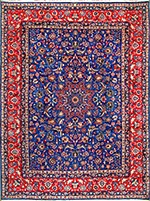Textiles Studies

Textile Research Works
Date of this Version
1992
Document Type
Article
Citation
Exhibition, The Textile Museum, Washington, DC, August 22, 1992 - February 15, 1993.
Abstract
A unique ethnographic monument recently donated to The Textile Museum merits special attention not only for its size (twenty-five feet long and four feet high), but for its important place in the history, use, construction, and decoration of functional textiles.
Designed to enclose space in a nomadic environment. the reed screen may be considered an architectural textile destined for use within the community in which it was made. This distinguishes it from commercial products manufactured for the market, and, indeed, from most other utilitarian textiles, although it shares with carpets and kilims an obvious intent to beautify the environment for which it was designed. Similar textiles woven with reeds serve as doors. or as walls to define or partition space. The length of this type suggests that it would have served as an enclosure. most probably for a domestic living quarter in a tent. Several different nomadic peoples across Asia have used such screens. including the Kazaks and Kirghiz of Turkistan, Turkmen groups, and the Kurds of western Iran, the southern Caucasus and eastern Anatolia. The screens are typically referred to by various names such as chikh or cig (with related pronunciation).
Included in
Art and Materials Conservation Commons, Art Practice Commons, Fiber, Textile, and Weaving Arts Commons, Indigenous Studies Commons, Museum Studies Commons


Comments
Copyright © 1992 The Textile Museum